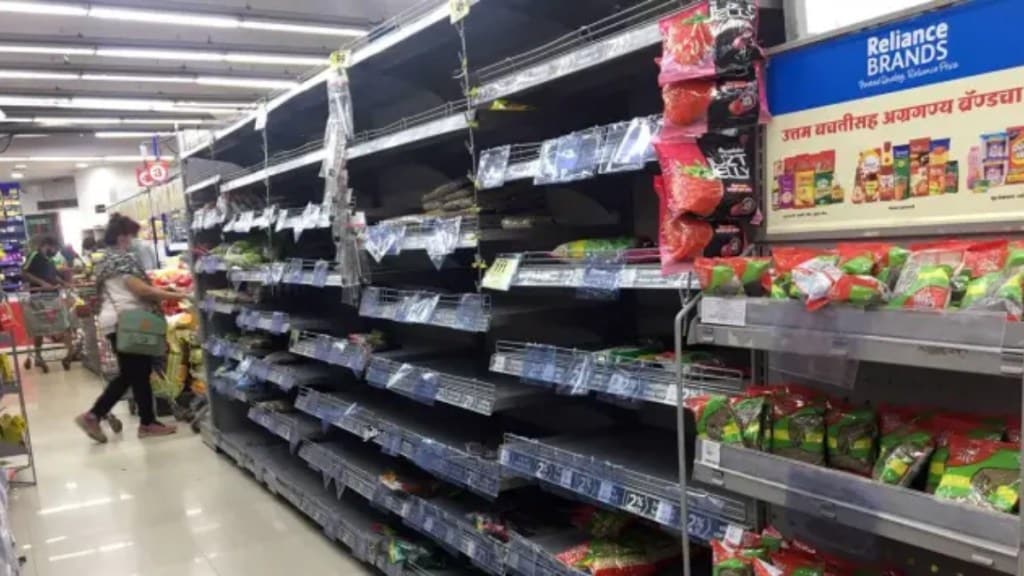Many mom-and-pop shop owners in the country are struggling with the excess fast-moving consumer goods (FMCG) inventory in their stores after witnessing poor sales.
The festive season of October-November, in particular, was lacklustre for kiranas as the offtake of products such as beauty, cosmetics, chocolate and confectionery was hit hard as consumers chose to cut back on expenditure in rural and semi-urban areas, officials at the All India Consumer Products Distributors’ Federation (AICPDF), an apex body of FMCG distributors, said.
Kiranas are a vital distribution channel for FMCG companies which constitute 80% of their business.
“The decline in sales during the Diwali period this year has been to the tune of 20-25% versus last year,” says Dhairyashil Patil, president, AICPDF. The inventory pile-up, according to distributors that FE spoke with across the north, west and east has led to sharp discounting to clear the backlog for fresh stock.
“Contrary to expectations, there was subdued demand and enthusiasm during Diwali this year. Consumers seem to be in save rather than spend mode. It is time FMCG companies take note of these market realities and stop dumping inventory into general trade,” he said.
The inventory pile-up within general trade, said Patil, has led to the average closing stock for distributors, reaching 25 to 30 days, compared with the normal range of 7 to 15 days. Additionally, the average market credit period has risen to 15 to 25 days, up from the previous 7 to 15 days.
FMCG companies, on the other hand, have been calling out slowdown challenges in rural and semi-urban areas for months now. More than half of the 12-million kirana outlets, as mapped by market researcher NielsenIQ, sits in rural and semi-urban areas, said companies and market experts, which explains the glut in general trade, the main channel of distribution in these markets, owing to the slowdown in demand.
While NielsenIQ has been speaking of a revival in traditional trade over the last three quarters, including January-March 2023 (volume growth of 1.9%), April-June 2023 (6.2%) and July-September 2023 (7.5%) in line with a gradual recovery in rural areas, the weak performance of the October-November festive period could act as a speed bump to growth, experts tracking the market said.
“Rural has seen recovery happen at a slower rate over the last couple of quarters. There was expectation that the second half of the current financial year would be better in terms of demand, starting with the festive season. But that hasn’t happened. Demand has been muted. This is visible in non-food versus food categories,” said Mohit Malhotra, chief executive officer, Dabur India.
Mayank Shah, senior category head, Parle Products, endorsed this point, saying that traditional trade would need revitalisation, including expansion of direct reach, focus on items that are moving quickly on shop shelves and rationalisation of stock-keeping units to ensure general trade is not cluttered with products.
“Food is essential for households. The pressure is not as acute on the food side as it is on the non-food side. The focus, therefore, for companies should be on what is working and what is not to ensure that general trade functions smoothly,” he said.
In a recent earnings call, Saugata Gupta, MD & CEO, Marico, said the company would push its presence more into chemists, cosmetics and food outlets to drive its diversification agenda within general trade. It would also introduce a few of its direct-to-consumer brands such as True Elements and Plix into general trade to improve offtake.
“I think there is a scope to do a better job in chemists, cosmetics, and food outlets. At the same time, we believe rural is a source of competitive advantage because direct rural distribution is an entry barrier for others. Therefore, that is something we have to keep doing because our rural portfolio also makes good gross margins,” Gupta said.
FMCG firms derive over a third of their sales from rural areas. An uptick in rural areas is expected to help the overall FMCG market to bounce back in terms of growth, since it has traditionally been a segment that delivers higher growth rates than urban areas.


